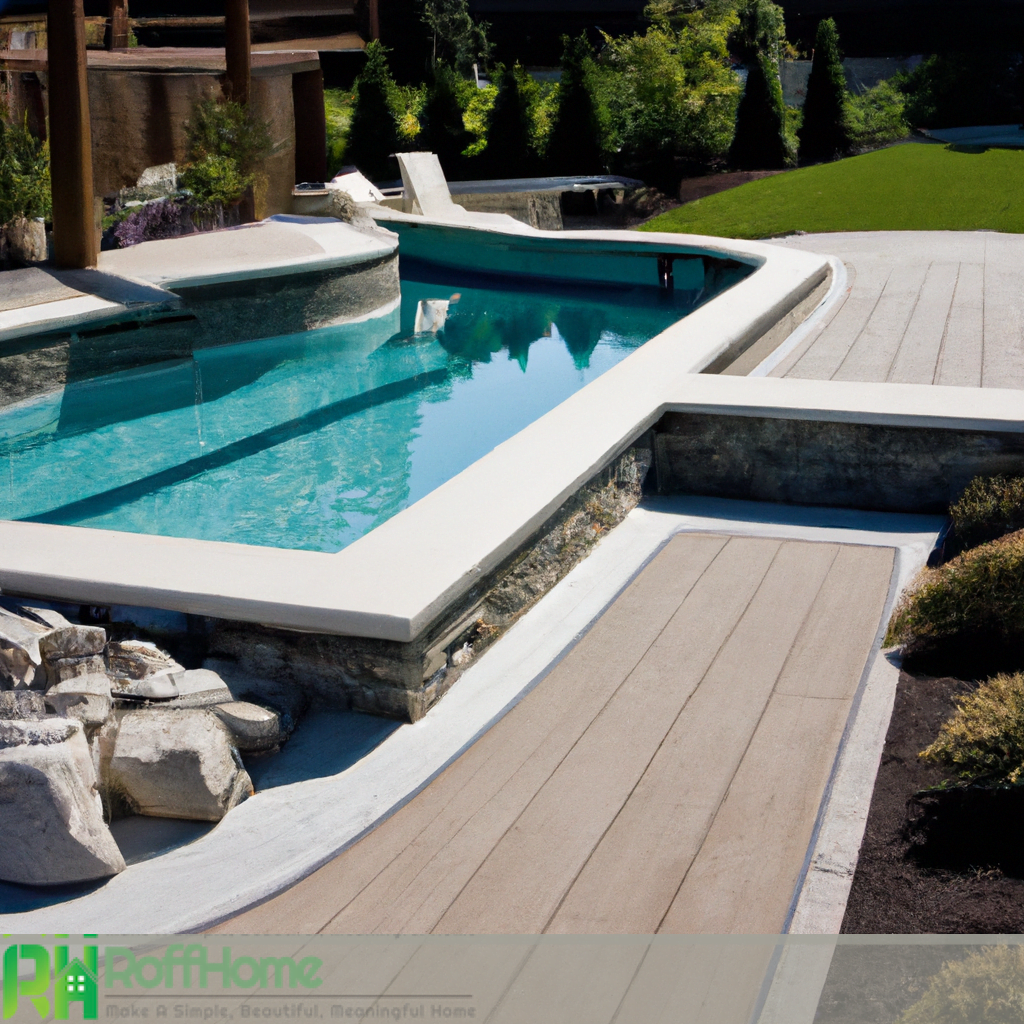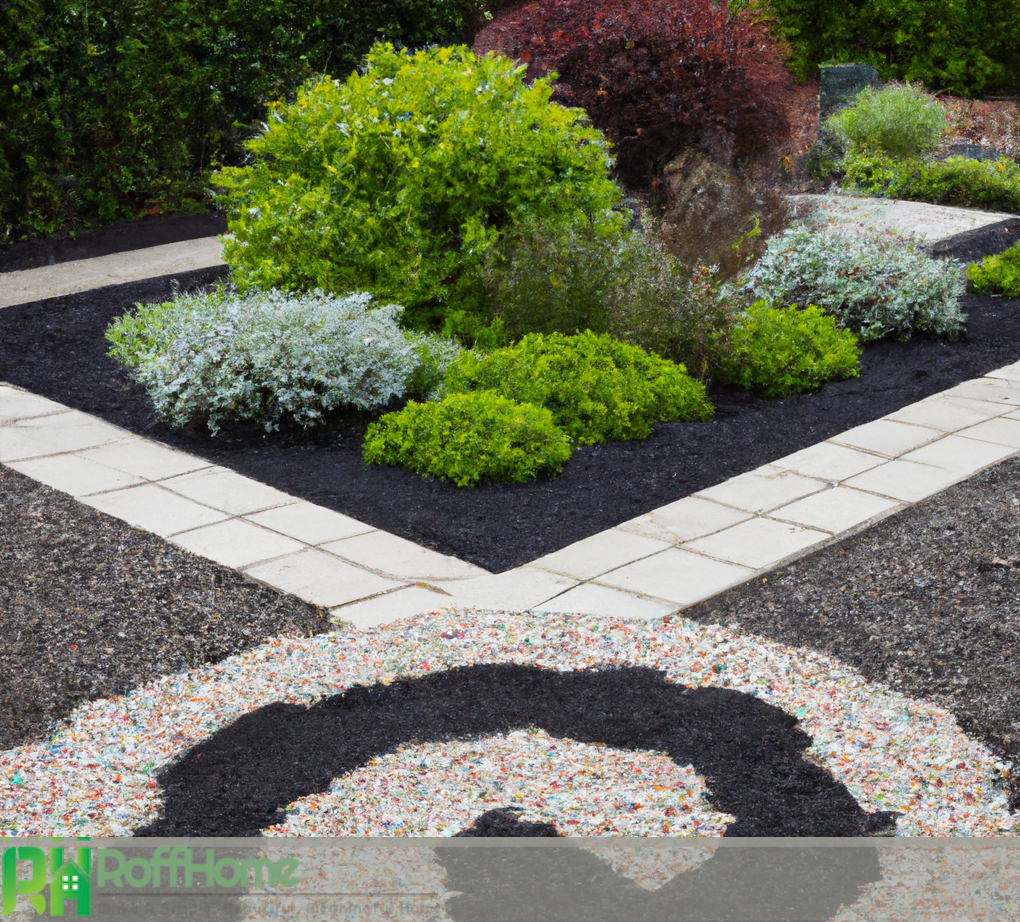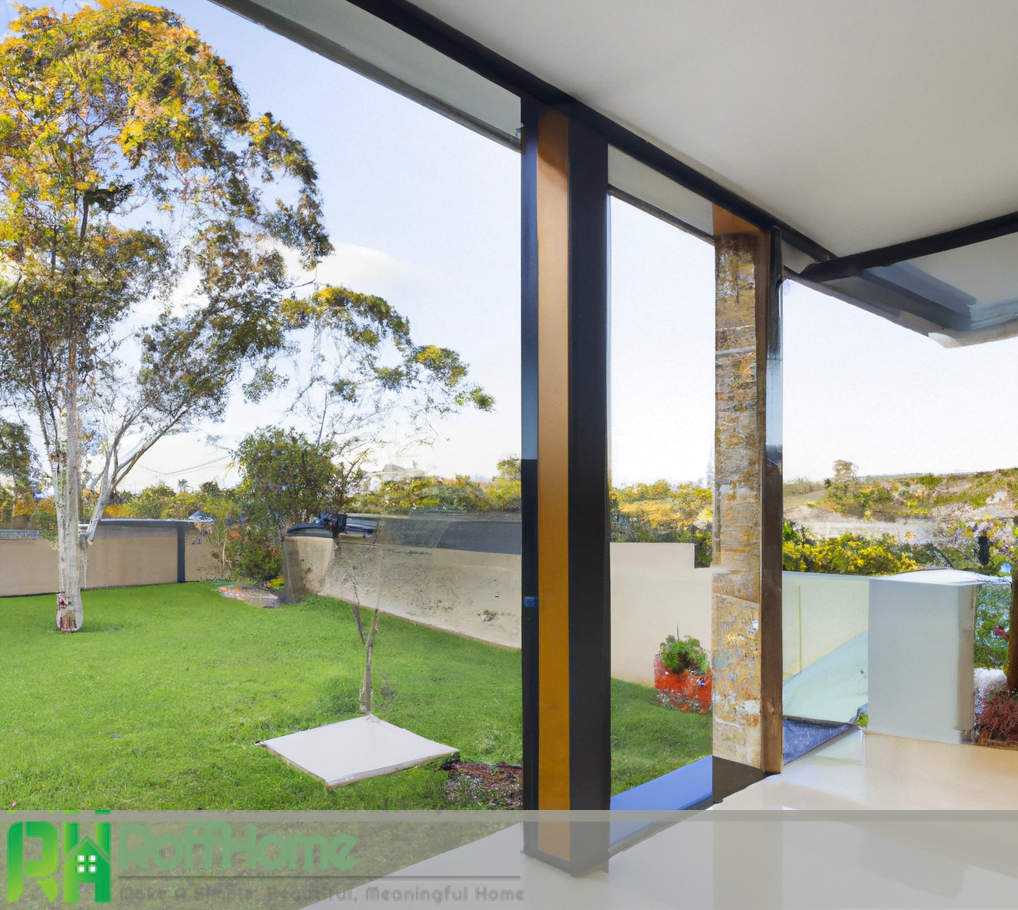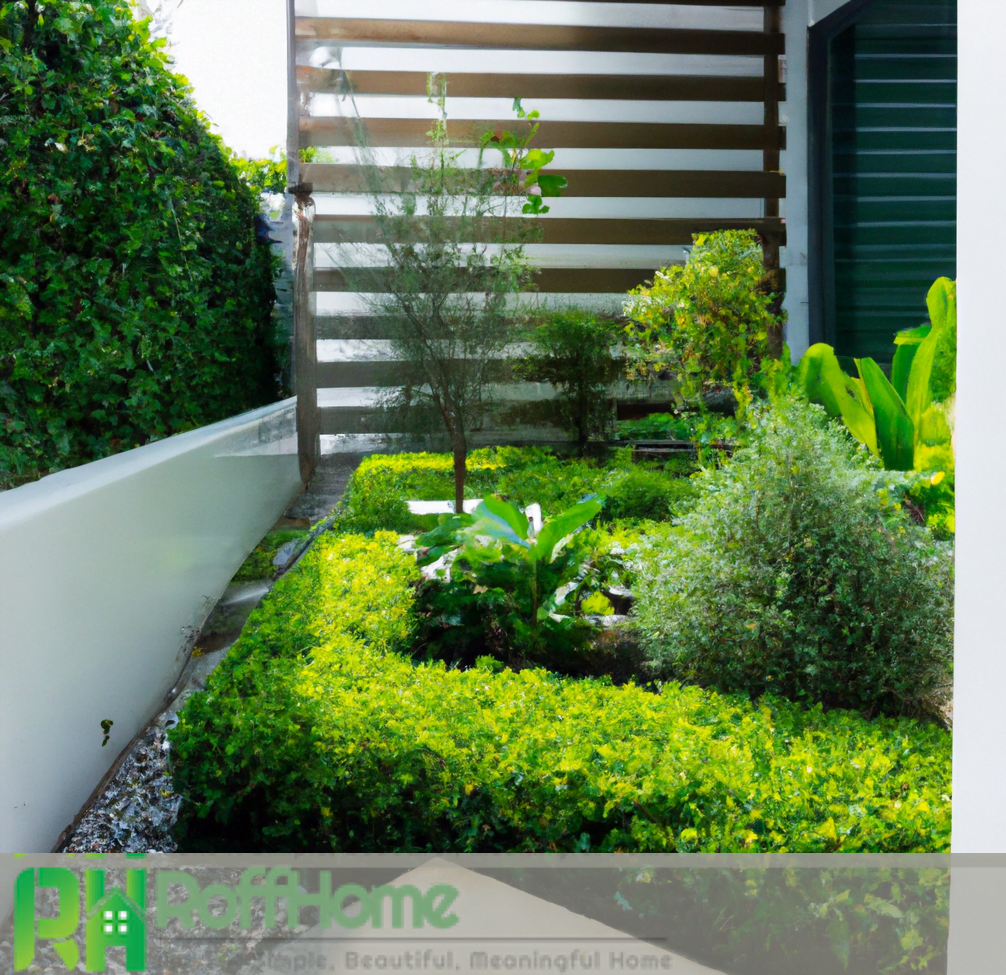Low Maintenance Dog-Friendly Garden Designs for a Beautiful Outdoor Space

As a pet owner, creating a beautiful and functional outdoor space for your furry friend is just as important as the aesthetics of your garden. However, maintaining a garden with busy schedules and limited time can be daunting. That’s where the concept of “low maintenance dog-friendly garden designs” comes in.
This approach focuses on creating a beautiful outdoor space that requires minimal effort to maintain while still being safe and enjoyable for your pet. Several key factors are to consider, including plant selection, play areas, safety, fencing, and more.
Choosing the right aesthetically pleasing and safe plants for your dog is crucial. Drought-resistant plants, mulching, raised beds, and evergreens are just a few options that require little maintenance and are safe for your furry friend to enjoy.
Incorporating play areas and a sensory garden can also stimulate and entertain your pet. Safety features such as fencing, pet waste management, and natural pest control can help keep your dog safe and healthy.
Choosing the right plants for your low maintenance dog-friendly garden
Choosing the right plants for your low-maintenance dog-friendly garden is essential to creating a beautiful and safe outdoor space for your furry friend. The right plants will enhance your garden’s aesthetics and provide your pet with a safe environment to play and explore. Here are some tips on how to choose the right plants for your low-maintenance dog-friendly garden:
Consider your pet’s habits: Before choosing plants, it’s important to understand your pet’s behavior. Some dogs love to dig, while others are prone to eating plants. Choose plants that can withstand these habits and won’t harm your pet if ingested.
Choose non-toxic plants: Many common garden plants can be toxic to dogs if ingested. Some examples include lilies, azaleas, and daffodils. Choose non-toxic plants, such as marigolds, sunflowers, and petunias, to keep your pet safe.
Opt for hardy plants: Choose plants that can withstand various weather conditions and require minimal care. Drought-resistant plants, evergreens, and succulents are great for a low-maintenance dog-friendly garden.
Consider plant placement:
- When designing your garden, consider where to place plants to keep your pet safe.
- Avoid placing toxic plants near play areas or along walkways.
- Avoid plants with thorns or sharp leaves.
Create a sensory garden: Incorporating a sensory garden can stimulate your pet. Consider planting herbs such as lavender, mint, and rosemary, which can act as natural pest repellents.
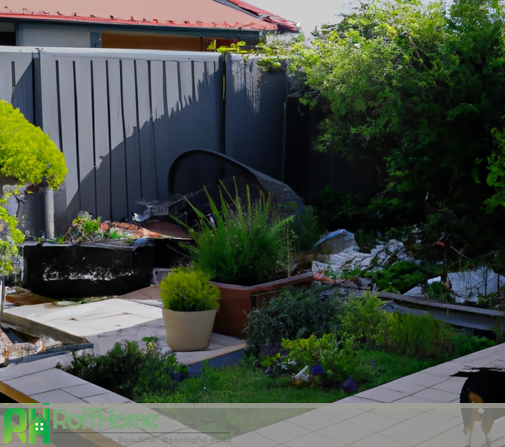
Designing a garden for multiple dogs: Tips and considerations
Designing a garden for multiple dogs can be challenging but rewarding. With some careful planning and consideration, you can create a space that is not only beautiful but also safe and enjoyable for all of your furry friends. Here are some tips and considerations to keep in mind when designing a garden for multiple dogs:
Space considerations: If you have more than one dog, you must consider the space requirements for each of them. Ensure they have enough room to run and play without getting in each other’s way.
Plant selection: Choose plants that are non-toxic and safe for dogs. Consider planting grass or other soft ground covers to reduce the risk of injury during playtime.
Create separate play areas: If your dogs have different personalities or styles, consider creating separate play areas. This will help prevent conflicts and ensure each dog has enough space to play and exercise.
Incorporate shade: Dogs can easily overheat in the sun, so providing plenty of shade in your garden is important. Trees, umbrellas, and shaded seating areas can all provide relief from the heat.
Provide water: Make sure plenty of fresh water is available for your dogs in the garden. Consider adding a water feature or fountain that your dogs can drink from.
Install proper fencing: Ensure your garden is properly fenced to keep your dogs safe and contained. If you have multiple dogs, consider installing separate areas of fencing to keep them apart when necessary.
Creating a dog-friendly garden: plant selection and layout ideas
Creating a dog-friendly garden is a great way to provide a safe and enjoyable outdoor space for you and your furry friend. When selecting plants and planning your garden’s layout, several factors must be considered to ensure a pet-friendly environment. Here are some plant selection and layout ideas for creating a dog-friendly garden:
Choose non-toxic plants: It’s important to select plants that are non-toxic to dogs. Some common garden plants, such as lilies, daffodils, and azaleas, can be toxic to dogs if ingested. Choose pet-safe plants, such as marigolds, sunflowers, and petunias.
Opt for hardy plants: Choose plants that can withstand the wear and tear of a playful dog. Drought-resistant plants, evergreens, and succulents are great for a low-maintenance dog-friendly garden.
Create a sensory garden: Dogs love to explore and smell new things. Consider planting herbs such as lavender, mint, and rosemary, which can provide stimulation and act as natural pest repellents.
Incorporate lawn alternatives: If your dog likes to dig or run around, consider lawn alternatives such as ground covers, gravel, or artificial turf. This can reduce the required maintenance and prevent damage to your lawn.
Create designated play areas: Designate specific areas for your dog to play and exercise. This can prevent damage to other areas of your garden and also make it easier to clean up after your pet.
Install proper fencing: Ensure your garden is properly fenced to keep your dog safe and contained. This can also prevent damage to neighboring gardens and properties.
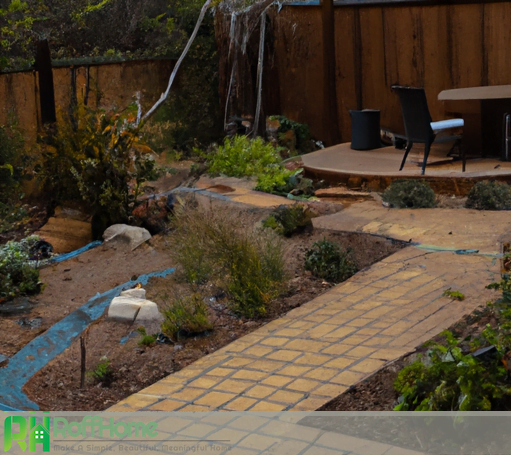
Bringing your low maintenance dog-friendly garden to life: DIY projects and creative ideas.
Once you have designed your low-maintenance dog-friendly garden, it’s time to bring it to life. Here are some DIY projects and creative ideas to help make your garden a beautiful and functional space for both you and your furry friend:
Build a raised bed: Raised beds are a great way to grow plants in a contained area and can be an ideal solution for low-maintenance gardening. You can build a raised bed using bricks, stones, or wood.
Create a DIY water feature: Dogs love to play in the water so a DIY water feature can be a fun addition to your garden. You can create a simple water feature using a large pot, barrel, pump, and rocks.
Install outdoor lighting: Outdoor lighting can enhance the beauty of your garden and make it safer to navigate at night. You can install solar-powered lights, string lights, or even create a DIY lantern using a mason jar.
Make a dog play area: Creating a designated play area for your dog can prevent damage to other garden areas. You can create a dog play area using artificial turf, gravel, or rubber mulch.
Build a DIY dog house: If your dog spends much time in the garden, consider building a DIY dog house. You can use wood, plastic or even repurpose an old shed.
Make DIY garden art: DIY garden art can add a personal touch to your garden and be a fun DIY project. You can create garden art using old tools or recycled materials or even create a mosaic using broken tiles.
Planting Ideas for a Dog-Friendly Garden
Planting a dog-friendly garden can be a fun and rewarding experience. Here are some planting ideas to help you create a beautiful and functional dog-friendly garden:
Use herbs as ground cover: Herbs such as thyme, oregano, and mint can be used as a ground cover in your garden. When stepped on, they release a pleasant aroma, and dogs love to smell and explore them.
Choose native plants: Native plants are well-adapted to the local climate and are more resistant to pests and diseases. They can also provide a habitat for local wildlife, which can be entertaining for your dog to observe.
Plant flowers safe for dogs: Some flowers, such as marigolds, sunflowers, and petunias, are safe for dogs and can add a splash of color to your garden.
Incorporate edible plants: Incorporating edible plants such as strawberries, blueberries, and tomatoes can provide a healthy snack for your dog and add visual interest to your garden.
Use hedges as borders: Hedges such as boxwood or yew can create a natural border around your garden and provide a barrier for your dog to prevent them from running off.
Plant evergreens: Evergreens such as juniper, pine, and spruce can provide year-round foliage and are low maintenance.
Create a sensory garden: A sensory garden can stimulate your dog through scent, texture, and taste. Consider planting herbs such as lavender, rosemary, and thyme.

Building a dog-friendly garden on a budget: affordable options for pet owners
Building a dog-friendly garden doesn’t have to break the bank. Here are some affordable options for pet owners to create a functional and beautiful outdoor space for their furry friends:
Use recycled materials: You can use recycled materials such as old pallets, bricks, and stones to build garden beds, pathways, and borders. This can be a cost-effective and eco-friendly way to create a garden.
Choose low-cost plants: You can choose low-cost plants such as annuals, wildflowers, and succulents that require less maintenance and can provide visual interest to your garden.
Make your compost: Composting can be a cost-effective way to create nutrient-rich soil for your garden. You can create your compost using kitchen scraps, yard waste, and newspaper.
Use natural pest control: Natural pest control methods such as companion planting, handpicking, and homemade sprays can be affordable to keep pests at bay without using harmful chemicals.
Create a DIY dog play area: You can use inexpensive materials such as gravel, sand, or rubber mulch. This can be a fun and safe space for your dog to play and exercise.
Build raised beds: Using inexpensive materials such as cinder blocks, stones, or wood can be an ideal solution for low-maintenance gardening and help keep your dog out of garden beds.
Use artificial turf: Artificial turf can be a low-cost and low-maintenance alternative to natural grass. It can provide a soft and durable surface for your dog to play on.
Maintenance Tips for a Low Maintenance Dog-Friendly Garden
A low-maintenance dog-friendly garden can be a great addition to any home, but it still requires some upkeep to keep it healthy and attractive. Here are some maintenance tips for a low-maintenance dog-friendly garden:
Watering: Watering is essential for maintaining a healthy garden. Use a drip irrigation system or a soaker hose to water your plants efficiently and reduce water waste. Water your garden early in the morning or late afternoon to prevent water loss through evaporation.
Mulching: Mulching helps to retain moisture in the soil, suppress weeds, and regulate soil temperature. Use organic mulch such as wood chips or straw to keep your garden healthy and low maintenance.
Pruning: Pruning helps to keep plants healthy and encourages new growth. Regularly prune your plants to remove dead or diseased branches and keep them looking neat.
Fertilizing: Fertilizing can help your plants grow strong and healthy. Use organic fertilizers such as compost or manure to keep your garden healthy without harmful chemicals.
Pet waste management: Proper pet waste management is essential for maintaining a healthy and safe garden. Regularly pick up pet waste and dispose of it properly.
Natural pest control: Natural pest control methods such as companion planting, insecticidal soaps, and physical barriers can help to control pests without harmful chemicals.
Garden furniture maintenance: Garden furniture such as benches or chairs can provide a comfortable, relaxing spot in your garden. Regularly clean and maintain your garden furniture to keep it looking its best.
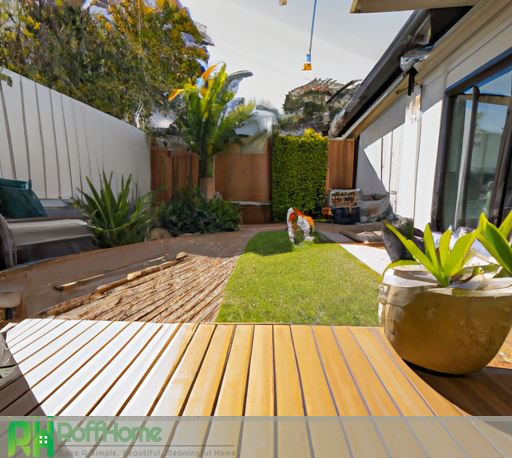
Benefits of Low Maintenance, Dog-Friendly Garden Designs
Low-maintenance, dog-friendly garden designs benefit both pet owners and their furry friends. Here are some of the key benefits:
Reduced maintenance: Low-maintenance garden designs require less time and effort to maintain. This can be especially beneficial for busy pet owners who may need more time to devote to gardening.
Safe for pets: A dog-friendly garden design considers your pets’ safety. By avoiding toxic plants and using appropriate fencing, you can create a safe outdoor space for your furry friend to explore and play in.
Reduced hazards: A low-maintenance garden design can also reduce hazards for your pets. By eliminating sharp or dangerous objects and creating clear pathways, you can help to prevent accidents and injuries.
Play areas: A dog-friendly garden design can also include designated play areas for your pets. This can provide a fun and safe space for your furry friend to exercise and play.
Health benefits: Spending time in a low-maintenance dog-friendly garden can also benefit pets and pet owners. Exposure to nature and fresh air can reduce stress, lower blood pressure, and improve overall well-being.
Improved curb appeal: A well-designed and maintained garden can also enhance your home’s curb appeal. A low-maintenance, dog-friendly garden can be beautiful and functional, creating an inviting outdoor space for you and your furry friend.
In conclusion, a low-maintenance dog-friendly garden design can provide numerous benefits for both pets and pet owners. By selecting the right plants, creating safe play areas, and using proper maintenance techniques, you can create a beautiful and functional outdoor space that is enjoyable and safe for your furry friend.

